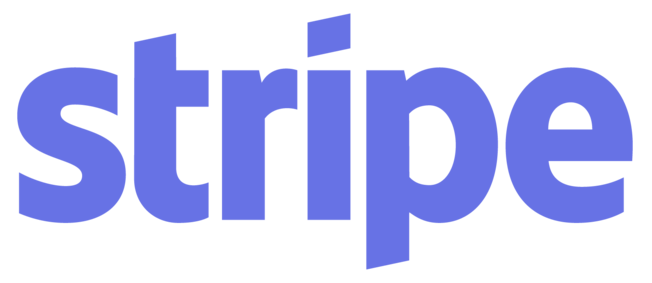Half of all New Zealanders now shop online (NZ Post) – if you can’t offer an e-commerce solution with easy payment options, you’re at risk of falling behind your more agile competitors.
But in order to start selling digitally, you need to know that you can handle people’s credit cards and other payment choices quickly and securely. That’s no easy task, especially for a small business.
This is where payment gateways come in. So which service is right for you? These are the best five payment gateways on offer in New Zealand in 2021.
- Think you’ve missed a step? Check out our “Definitive guide to payment gateways” to learn the basics.
Contents
Why you need to offer multiple payment options
1. 
Flo2Cash is a local company, headquartered in New Zealand. Operating since 2003, Flo2Cash bills itself as a platform that requires no technical expertise to use, and allows users to offer multiple payment plan options to their customers.
Key features
- Offer customers an array of instalment plan options if they can’t pay all at once.
- No merchant bank account required – these can be provided by Flo2Cash.
- PCI DSS 3.2 compliant as a level one service provider.
What platforms will Flo2cash work with?
- eCommerce (WordPress)
- WooCommerce (WordPress)
- OpenCart
- Magento
- Drupals 6 and 7
- Joomla
Flo2Cash’s fees
Flo2Cash does not advertise pricing on its website, however these are the most up-to-date figures we can find (from Website World NZ, 2021).
- Setup fee: $200
- Monthly fee: $30
- Transaction fee: From 3.4%
For more information on integrating Flo2Cash, click here.
2. 
Paystation was the first specialist e-commerce payment gateway in New Zealand, formed in Palmerston North in 2002. Since then it has grown to become one of the country’s most popular gateways, having worked with some of our largest brands.
Key features
- Straight-forward pricing packages based on scope (i.e. SME vs major enterprise needs)
- No contracts on their standard plan.
- Local support.
- Take payments via Paystation even if you don’t have a website or app.
What platforms will Paystation work with?
- Concrete5
- Ubercart (Drupal)
- Hikashop (Joomla)
- Virtuemart (Joomla)
- Lightbox
- OS Commerce
- Open Cart
- Prestashop
- Shopify
- Spreedly
- SwipeStripe
- WooCommerce (WordPress)
- Gravity Forms (WordPress)
- Xcart
- Zencart
Paystation’s fees
- Monthly payments: $19-$149
- Setup fee: $99-$149
- Transaction fee: From 75 free transactions, $0.32 per transaction thereafter (Paystation’s basic plan).
For more information on implementing Paystation, click here.
3. 
Our third Kiwi company on the list, Windcave was formerly known as Payment Express and can be seen both online and in stores – as the company provides EFTPOS terminals as well as digital payments.
Key features
- PCI DSS compliant at level one.
- Integrated or standalone payment portal, including over-the-phone payments and e-invoicing.
- Supports a variety of payment options, including credit cards, Apple Pay, and PayPal.
What platforms will Windcave work with?
Windcave says it can integrate with “all major e-commerce” platforms, specifically highlighting:
- Magento
- WooCommerce (WordPress)
- Shopify
- PrestaShop
Windcave fees
- Setup fee: Minimum $99
- Minimum monthly fee: $30
- Transaction fee: $0.30 plus 2.80% per transaction
For more information on implementing Windcave, click here.
4. 
Bambora is a company headquartered in Stockholm, Sweden with offices all over the world – including here in NZ. Its system is designed to handle real-time transactions, batch payments, and also recurring payments.
Key features
- No merchant account required – Bambora bills itself as a full end-to-end merchant facility.
- Can handle in-app and mobile payments for on-the-go customers.
- Full developer support with a local NZ-based team.
What platforms will Bambora work with?
- Magento versions 1 and 2
- NitroSell
- WooCommerce
- Xero
- iOS and Android SDK
Bambora fees
Bambora does not advertise New Zealand pricing on its website. However, you can learn more about some of its prices overseas on this FAQ page. These should be taken with a grain of salt as local prices may differ.
For more information on implementing Bambora, click here.
5. 
Stripe is in use by some of the world’s largest companies, billing itself not only as a supplier of online payment options for merchants but also useful apps that help in the management of said payments, such as accounting or preventing fraud.
Key features
- Strong pedigree – in use by Google, Salesforce, Amazon, and Microsoft.
- Stripe was rated the highest scoring out of ten global payments providers by ForresterWave.
- More than just online payments, Stripe offers a suite of financial tools.
- Can integrate with a staggering number of apps, no code required.
What platforms will Stripe work with?
At time of writing, Stripe has 106 e-commerce partner apps listed on its website. These include some of the common names you’d expect in such a list, including:
- Magento versions 1 and 2
- WooCommerce
- Shopify
- Salesforce
- Drupal Commerce
- TradeGecko
- MailChimp
For a complete list of partner apps, see Stripe’s apps and extensions page.
Stripe fees
- Setup fee: None
- Monthly fee: None
- Transaction fee: NZ$0.30 plus 2.9% per successful credit card charge.
For more information on implementing Stripe, click here.
Don’t forget – you need to offer multiple payment options
Most payment gateways tend to centre around the idea of accepting credit card payments, but it’s absolutely vital that Kiwi businesses like yours offer multiple payment options – and we’ll tell you why.
For starters, according to a recent study by Yabble and Payments NZ^, credit cards aren’t as popular as they once were. They’ve dropped in popularity in the 18-34 years age bracket (only 51% of these individuals used a credit card in 2020) and out of all New Zealanders, nearly a full third didn’t use a credit card in that same 12 months (Yabble NZ Consumer Study 2020).
Meanwhile, we’re seeing growing adoption of alternative payment types. For example, the same survey above noted that around a third of Kiwis are using payment apps like Google or Apple Pay, as well as direct online payment options such as POLi.
So what are my alternatives?
Direct bank payments
Yabble and Payments NZ’s survey above shows that 33% of Kiwis are using direct bank payment options such as POLi or Account2Account (jumping to 37% for the 35-64 years bracket).
Portals like POLi allow customers to pay online using their regular banking account. By shopping with this familiar platform, it helps build the trust gap in Kiwi shoppers making online purchases as there’s that extra sense of credibility to the payment.


Buy now, pay later
While fewer Kiwis overall use buy now, pay later services, this option is growing fast among younger people.
Buy now, pay later options like Laybuy and AfterPay let customers split up large purchases into equal instalments – such as weekly or fortnightly. Unlike credit cards, these providers don’t charge interest to customers (although fees do sometimes apply to merchants).
Payment apps
Payment apps are becoming increasingly familiar to customers, as most modern smart devices come with this option built-in (Apple Pay, Google Pay, Samsung Pay). Nearly half of young people are using them, found Yabble, in addition to 41% of those aged 35-64 years.
These apps essentially link customers’ online bank accounts to their phone, allowing them to make payments from their device instead of a card. Some also offer contactless payment so they can be used at POS as well as online.
- Read more: “Top 12 methods for accepting online payments in New Zealand (and how to choose the right one)”
Conclusion
Most online payment gateways offer similar services, but it always pays to compare providers to see if you can find one that either offers easier integration, slightly more features, or better fees.
But no matter which payment gateway you choose, you need to make sure that they can either accept multiple payment options, or that your e-commerce website is set up to take more than just credit cards. That way you’re setting yourself up to delight a wide variety of customers, no matter what method of payment they prefer.
Want to learn more about POLi? Read up on the benefits here!
